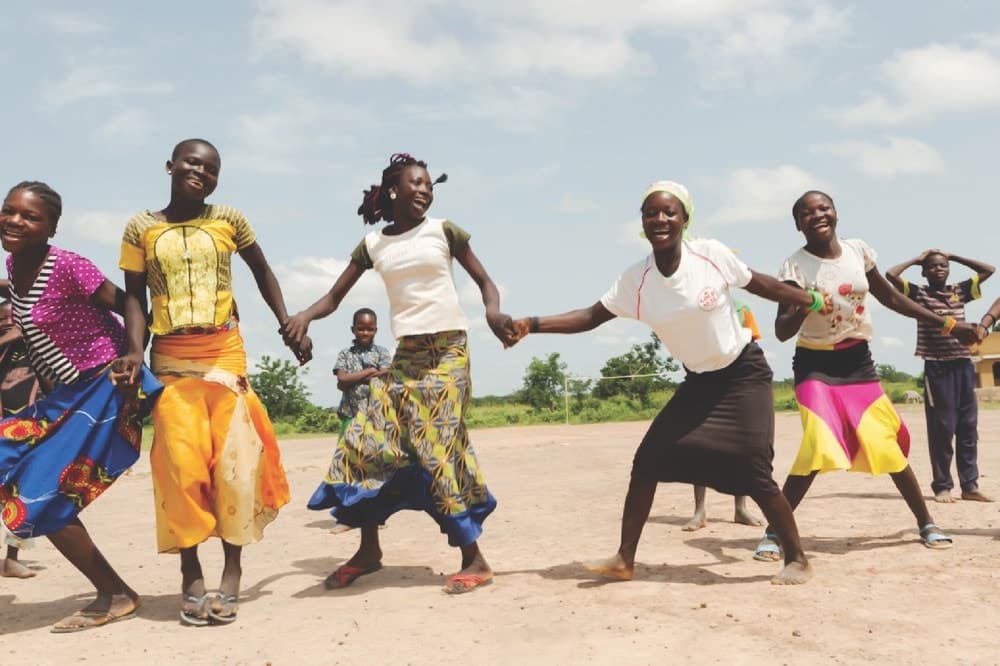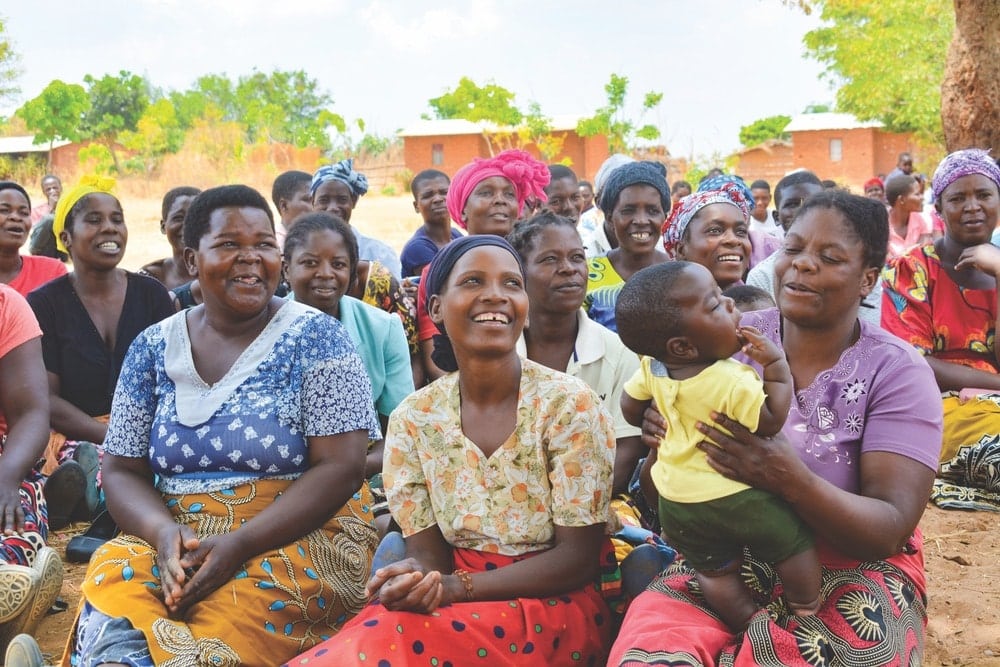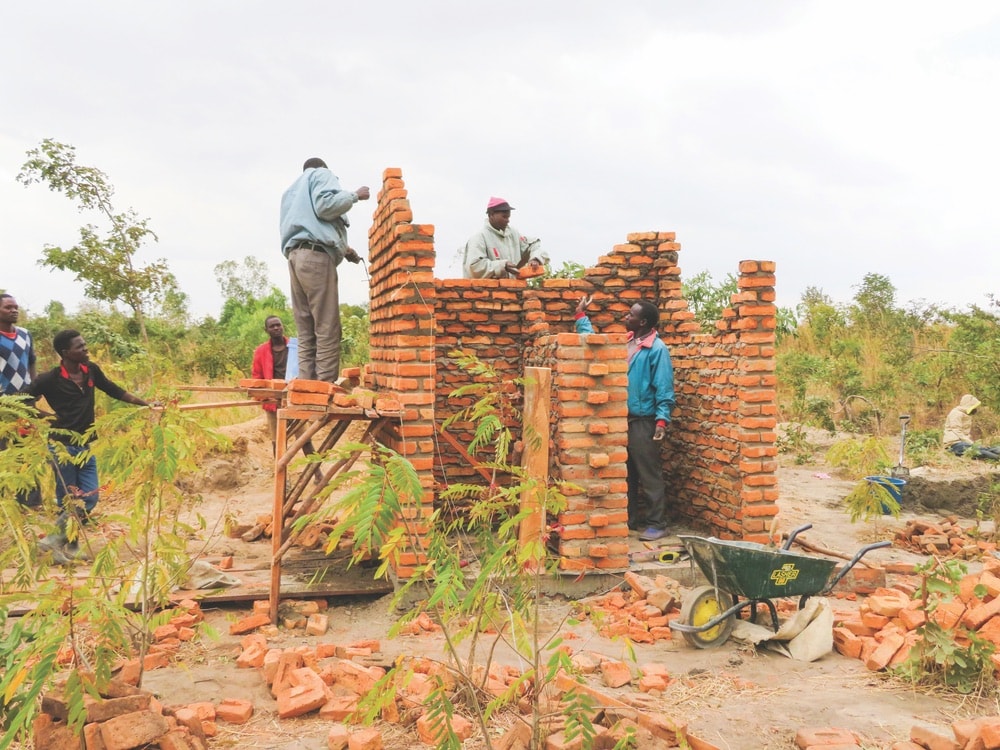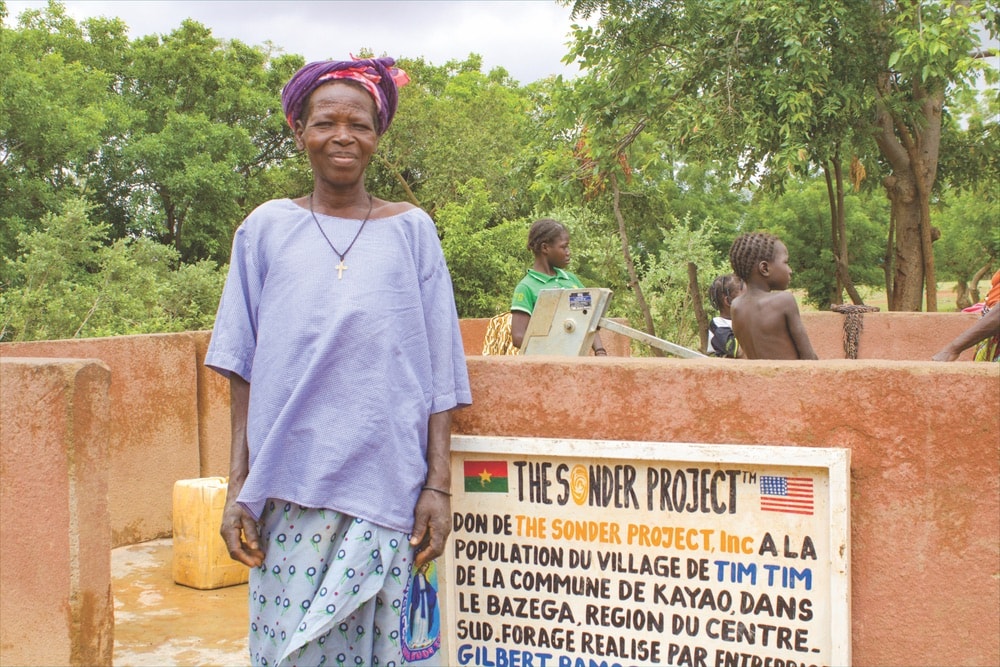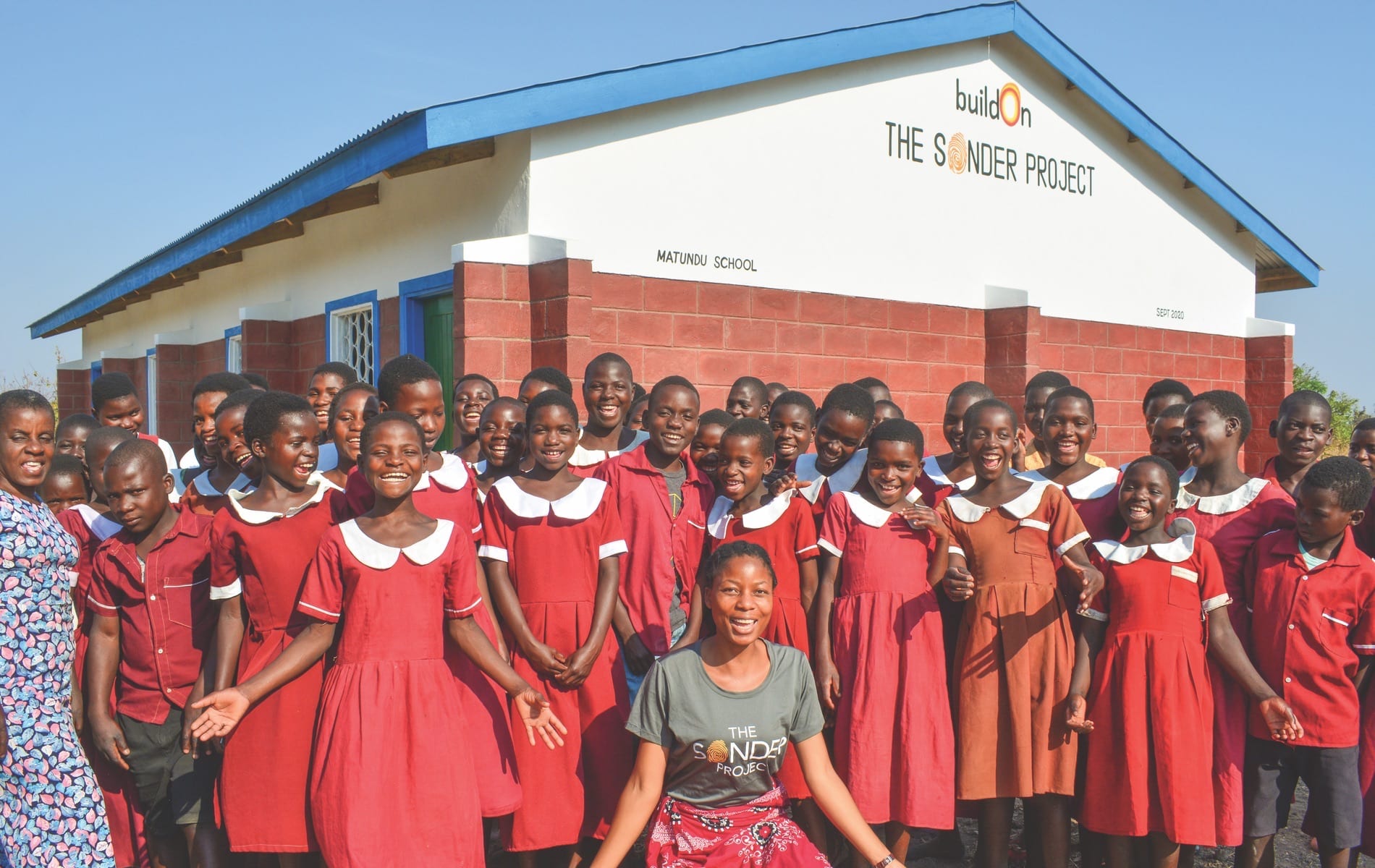
vie-magazine-the-sonder-project-giving-hero
The Sonder Project’s tenth school, completed in September 2020. This school in Central Malawi will help support four hundred currently enrolled students.
Giving Smartly
By Chad Zibelman | Photography courtesy of The Sonder Project
December is the most common month to make charitable contributions, and this year the reasons for giving are greater than ever. For starters, the coronavirus pandemic has had a significant impact on most organizations’ fund-raising plans. Many live events had to be canceled or they were converted to virtual events, with mixed results. Additionally, reliable annual supporters have been impacted by COVID-19, resulting in a change of donation patterns. Add to that the increased costs of operating in a pandemic world, and you can see how nonprofit organizations dependent upon donations can certainly use your support this year.
There are more reasons to donate this year than just the COVID-19 pandemic and having a giving spirit; the 2020 CARES Act passed at the end of March provides tax incentives as well. Individual taxpayers that do not itemize their deductions can now deduct up to three hundred dollars per individual. That’s practically free money: you can give to a cause that matters to you rather than paying it in taxes. Furthermore, individuals who do itemize their deductions in 2020 can now deduct 100 percent of their adjusted gross income—up from 60 percent—and corporations can deduct up to 25 percent of their taxable income—up from 10 percent. Whether you can give a small or large donation, this is a great year to do it!
What if you’re not sure where to give? How do you ensure the money you donate is making an impact? How can you give smartly?
Here are a few tips to consider that will help give you confidence that your gift is making the most significant impact possible, whether you’re donating one dollar or one million dollars.
- The Sonder Project’s initiatives most often directly benefit women and girls who more commonly collect water and drop out of school due to antiquated gender roles.
- The Sonder Project’s initiatives most often directly benefit women and girls who more commonly collect water and drop out of school due to antiquated gender roles.
1. Do your research.
Choose an organization that you are familiar with and look it up, although the most revealing information may not be found on its website. Instead, use a search engine to find the organization’s Form 990. Most nonprofits who receive more than $50K per year are required to complete a Form 990, so you simply search, for example, Organization XYZ 990. The document provides excellent insight into an organization’s finances and how it operates. Although it certainly doesn’t tell the whole picture, it does give a more objective look at an organization. You can also look at an organization on CharityNavigator.com. Charity Navigator rates large nonprofits and recently created a rating sheet for smaller organizations like The Sonder Project, which is listed as one to which you can “Give with Confidence.”
Your gift can go a lot further abroad; because the level of poverty is greater, the cost of living for staff is lower, and solutions are often less complicated.
2. Give globally.
If you genuinely want to make the biggest possible impact with your donation, give to an organization working in the economically developing world. Your gift can go a lot further abroad; because the level of poverty is greater, the cost of living for staff is lower, and solutions are often less complicated. For instance, the water problem that began in 2014 in Flint, Michigan, cost over $350 million to fix for its population of roughly one hundred thousand people, or about $3,500 per person, according to the EPA. Meanwhile, it costs The Sonder Project $11,000 to provide access to clean water for a community of at least a thousand residents in Burkina Faso, equating to $11 per person. If you are interested in impacting more lives with less cost, consider supporting international causes.
- Partner community members in Malawi building pit latrines in conjunction with a Sonder Project school.
- Mariam Ramde, one of the many community members in Burkina Faso interviewed by The Sonder Project to assess the impact of its well program there.
3. Bigger is not always better.
If you are unfamiliar with local or smaller organizations, you may be more likely to support a large organization like the Red Cross or the American Cancer Society. These organizations are doing important work, but when you look at the number of donations they receive and the amount of money they spend on administrative functions and the infrastructure necessary to sustain them, your year-end donation is a drop in the bucket. According to Charity Navigator, the Red Cross spends $280.5 million per year—or 10 percent of its annual budget—on administrative and fund-raising expenses alone. Your donation is much more likely to be felt and appreciated by a smaller organization, especially in this pandemic-altered fund-raising landscape. When doing your research, compare the percentage of expenses between administrative costs and program costs. Assuming these percentages are similar, your donation will be a lot more meaningful to a smaller organization.
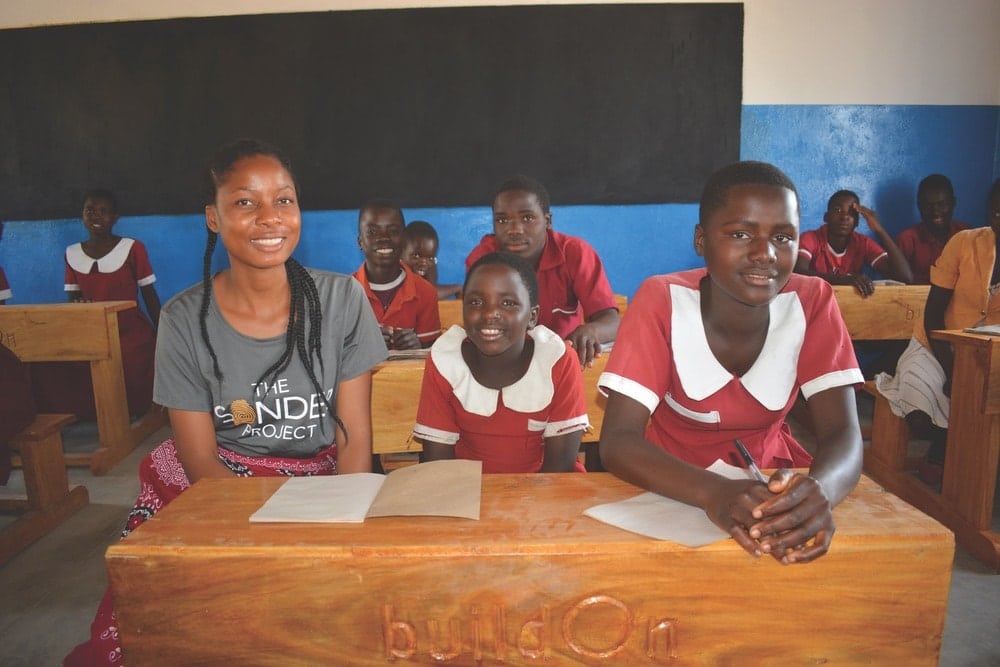
Students and Sonder Project staff inside the Matundu School in Malawi, completed in September 2020.
4. Look for impact and sustainability.
My final suggestion—and this is something the financial documents can’t tell you—is to look at a nonprofit’s long-term impact. What are the results of the organization’s work? If the organization focuses on running educational programs, do they celebrate the number of people they’ve educated and the number of training sessions held, or do they dig deeper and focus on the outcomes that participants experience after training? Is participation enough cause for celebration, or is there a measurable result that demonstrates the organization’s effectiveness over time?
This is why The Sonder Project invests time into surveying members of our partner communities and measuring the effects of infrastructure projects. It’s why I can tell you that people in our communities who receive new wells spend, on average, over an hour and a half less per day collecting water. That fact is significantly more powerful than just knowing that we’ve installed seventeen wells. Creating long-term sustainability is also why The Sonder Project views each of its communities as a partner. We establish local leadership committees to oversee each project and require local contributions, such as raw materials and manual labor, to increase local ownership.
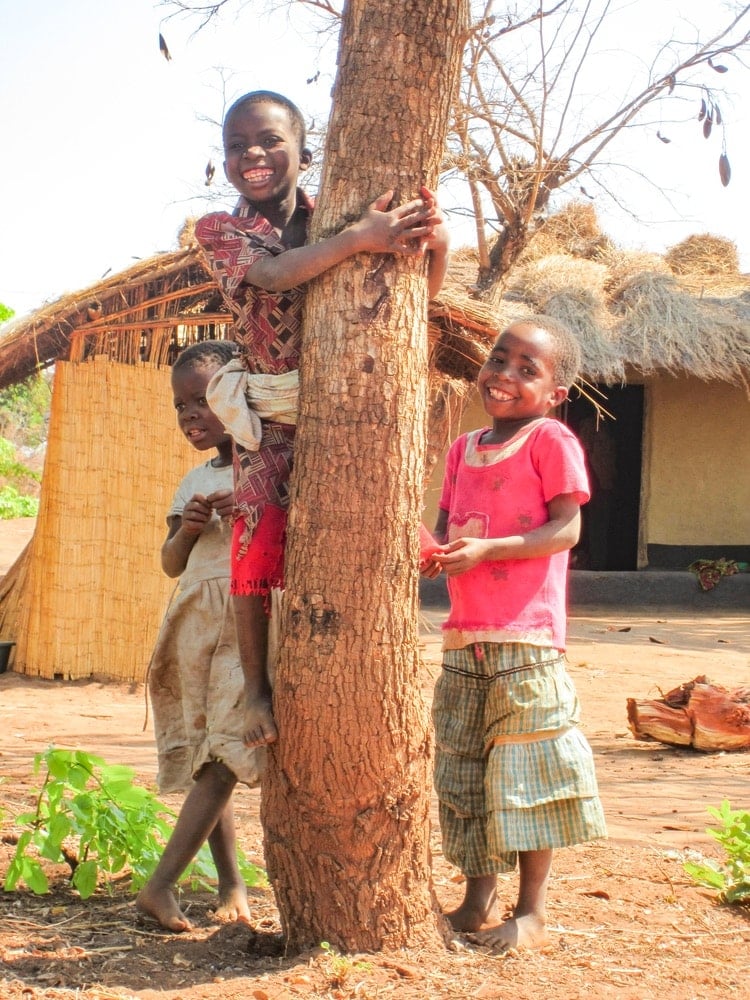
Before choosing a nonprofit to help this year, I encourage you to view an organization’s website to understand its sustainable impact. It can help if you also talk to a member of the organization directly to hear what they have to say about their programs’ outcomes. If they’re focused solely on celebrating what they’ve done rather than the long-term impact of their initiatives, then you are better off looking elsewhere.
Donating is often viewed as giving something away with the expectation of receiving nothing in return; however, that is not precisely accurate. It’s more accurate to consider your donation as an investment in reaching a specific type of outcome—not for you personally, but for a cause you care about. Follow the recommendations above, and I’m confident you will make a choice that can improve many lives. Good luck with your research, and if you’re still not sure, please consider making a high-impact donation to support our global work at The Sonder Project. ’Tis the season for giving!
— V —
Chad Zibelman is the CEO of The Sonder Project, a 501(c)(3) nonprofit based in Santa Rosa Beach, Florida. Its mission is to empower impoverished communities through high-impact, sustainable development. Focusing on sub-Saharan Africa, The Sonder Project partners with communities to drill wells, build schools, and on various other community-based projects to improve lives. Learn more or donate today at TheSonderProject.org.
Share This Story!
KEEP UP WITH THE LATEST STORIES FROM VIE



